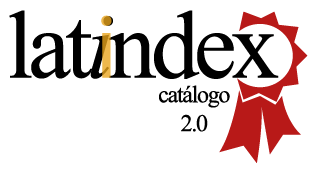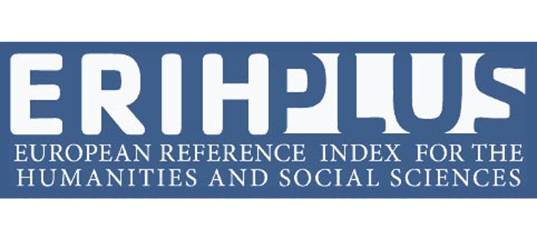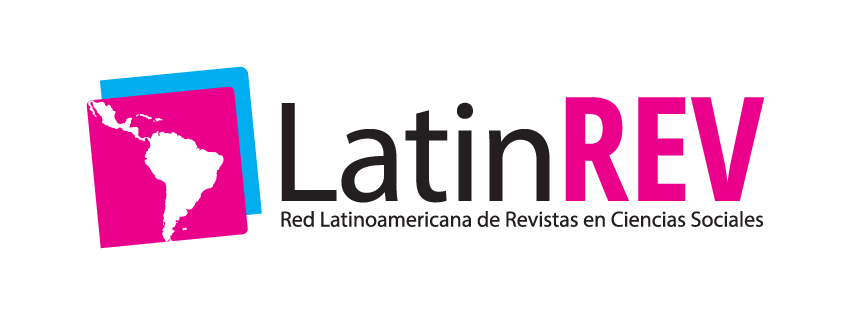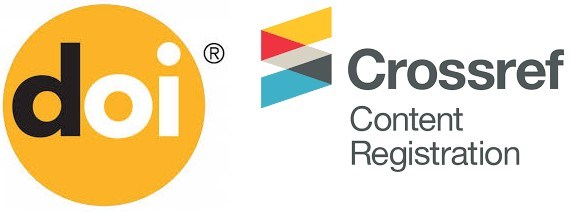English Capturing and rearing the Black Soldier Fly (Hermetia Illucens) for organic waste biodegradation in Puerto Quito, Ecuador.
DOI:
https://doi.org/10.46480/esj.5.3.164Keywords:
BSF, bioconversion, organic waste, HermetiaAbstract
Hermetia illucens, the black soldier fly- BSF(Black Soldier FLY), is one of the most studied species with the enormous potential to convert organic waste into animal food and feed and fertilizers. This invertebrate larva transforms up to 50% of organic biomass, reintroduced in the trophic chains as a natural nutrient recycling and waste management alternative. Despite the numerous worldwide reports, Ecuador has not documented any scientific information on capturing, multiplying BSF. This research seeks to determine the best H.illucens capture option in rural tropical climates in Ecuador and the best local waste to feed larvae and convert waste. The results determined that the most suitable trap to capture the insect was TE-005 (net-type trap), which showed capturing adult organ-isms, followed by the TD-004 trap (tray-type trap), where flies place their eggs for later hatching and selection of BSF larvae. The experimental design used a banana control treatment and three different substrates types: vege-tables, fruit trees, meat, pig manure, and mixed domestic waste. The results showed a bio-conversion percentage rate of 77.66% for the control test, followed by 55% for the domestic waste substrate.The current research was based on implemented several studies worldwide, indicating that the BSF waste treatment is a viable alternative to be implemented in Puerto Quito- Ecuador.|||||||
Downloads
References
Bortolini, S., Macavei, L. I., Hadj Saadoun, J., Foca, G., Ulrici, A., Bernini, F., Malferrari, D., Setti, L., Ronga, D., & Maistrello, L. (2020). Hermetia illucens (L.) larvae as chicken manure management tool for circular economy. Journal of Cleaner Production, 262. https://doi.org/10.1016/j.jclepro.2020.121289
Bosch, G., Oonincx, D. G. A. B., Jordan, H. R., Zhang, J., van Loon, J. J. A., van Huis, A., & Tomberlin, J. K. (2020). Standardisation of quantitative resource conversion studies with black soldier fly larvae. Journal of Insects as Food and Feed, 6(2), 95–109. https://doi.org/10.3920/jiff2019.0004
Bulak, P., Polakowski, C., Nowak, K., Waśko, A., Wiącek, D., & Bieganowski, A. (2018). Hermetia illucens as a new and promising species for use in entomoremediation. Science of the Total Environment, 633. https://doi.org/10.1016/j.scitotenv.2018.03.252
De Souza-Vilela, J., Andrew, N. R., & Ruhnke, I. (2019). Insect protein in animal nutrition. In Animal Production Science (Vol. 59, Issue 11, pp. 2029–2036). CSIRO. https://doi.org/10.1071/AN19255.
EMGIRS EP. (2018). Informe de Gestión 2018. (Disponible en: http://emgirs.gob.ec/phocadownload/informe-rendicioncuentas/2018/rendicion-de-cuentas-2018.pdf. Consultado el: 23 de septiembre de 2019).
Gold, M., Cassar, C. M., Zurbrügg, C., Kreuzer, M., Boulos, S., Diener, S., & Mathys, A. (2020). Biowaste treatment with black soldier fly larvae: Increasing performance through the formulation of biowastes based on protein and carbohydrates. Waste Management. https://doi.org/10.1016/j.wasman.2019.10.036
Gustavsson, J., Cederberg, C., Sonesson, U., Van Otterdijk, R., Meybeck A. (2011). Global Food Losses and Food Waste. Food and Agriculture Organization of the United Nations. Rom http://www.fao.org/docrep/014/mb060e/mb060e00.pdf
Ferronato, N., & Torretta, V. (2019). Waste mismanagement in developing countries: A review of global issues. International journal of environmental research and public health, 16(6), 1060.
Flores, N. (2015). Open Mind BBVA. Obtenido de OpenMind BBVA: https://www.bbvaopenmind.com/ciencia/medioambiente/evaluacion-del-impacto-ambiental-en-la-economia/
Gold, M., Cassar, C. M., Zurbrügg, C., Kreuzer, M., Boulos, S., Diener, S., & Mathys, A. (2020). Biowaste treatment with black soldier fly larvae: Increasing performance through the formulation of biowastes based on protein and carbohydrates. Waste Management. https://doi.org/10.1016/j.wasman.2019.10.036
Hoc B, Noël G, Carpentier J, Francis F y Caparros R. (2019). Optimization of black sol-dier fly (Hermetia illucens) artificial reproduction. PLOS ONE 14(4): 1-13.
Inglezakis, V.J.; Moustakas, K. Household hazardous waste management: A review. J. Environ. Manag. 2015, 150, 310–321.
IBM, SPSS, Modeler está disponible en IBM Cloud Pak® for Data, Plataforma de IA. Disponible en: https://www.ibm.com/es-es/analytics/spss-statistics-software
Kaya, C., Generalovic, T. N., Ståhls, G., Hauser, M., Samayoa, A. C., Nunes-Silva, C. G., Roxburgh, H., Wohlfahrt, J., Ewusie, E. A., Kenis, M., Hanboonsong, Y., Orozco, J., Carrejo, N., Nakamura, S., Gasco, L., Rojo, S., Tanga, C. M., Meier, R., Rhode, C., … Sandrock, C. (2021). Global population genetic structure and demographic trajectories of the black soldier fly, Hermetia illucens. BMC Biology, 19(1). https://doi.org/10.1186/s12915-021-01029-w
Lalander, C., Diener, S., Zurbrügg, C., & Vinnerås, B. (2019). Effects of feedstock on larval development and process efficiency in waste treatment with black soldier fly (Hermetia illucens). Journal of Cleaner Production, 208, 211–219. https://doi.org/10.1016/j.jclepro.2018.10.017
Lee, H. M., Kim, H. R., Jeon, E., Yu, H. C., Lee, S., Li, J., & Kim, D. H. (2020). Evaluation of the biodegradation efficiency of four various types of plastics by pseudomonas aeruginosa isolated from the gut extract of superworms. Microorganisms, 8(9). https://doi.org/10.3390/microorganisms8091341
Liu Z, Minor M, Morel P y Najar-Rodríguez J. (2018). Bioconversion of Three Organic Wastes by Black Soldier Fly (Diptera: Stratiomyidae) Larvae. Environmental Entomolo-gy. 47(6): 1609–1617
Morales G y Paláez C. 2010. Evaluación cinética de los dípteros como indicadores de la evolución del proceso de compostaje. Revista Ingenierías Universidad de Medellín. 9(17): 13-28
Moreno, L. (2019). Calidad de abonos orgánicos a partir del estiércol porcino y su efecto en el rendimiento del maíz chala. Lima.
Oonincx D, van Broekhoven S, van Huis A y van Loon J. 2015. Feed Conversion, Sur-vival and Development, and Composition of Four Insect Species on Diets Composed of Food By-Products. PLoS ONE 10(12): 1.20.
Parodi, A., De Boer, I. J. M., Gerrits, W. J. J., Van Loon, J. J. A., Heetkamp, M. J. W., Van Schelt, J., Bolhuis, J. E., & Van Zanten, H. H. E. (2020). Bioconversion efficiencies, greenhouse gas and ammonia emissions during black soldier fly rearing – A mass balance approach. Journal of Cleaner Production, 271. https://doi.org/10.1016/j.jclepro.2020.122488
Sripontan Y, Chiu C, Tanansathaporn S, Leasen K y Manlong K. (2019). Modeling the Growth of Black Soldier Fly Hermetia illucens (Diptera: Stratiomyidae): An Approach to Evaluate Diet Quality. J Econ Entomol. 113(2): 742-751.
Sheppard, D. C., Tomberlin, J. K., Joyce, J. A., Kiser, B. C., & Sumner, S. M. (2002). Rearing Methods for the Black Soldier Fly (Diptera: Stratiomyidae): Table 1. Journal of Medical Entomology. https://doi.org/10.1603/0022-2585-39.4.695
Salomone, R., Saija, G., Mondello, G., Giannetto, A., Fasulo, S., & Savastano, D. (2016). Impacto medioambiental de la bioconversión de residuos alimentarios por insectos: aplicación de evaluación del ciclo de vida para procesar usando Hermetia Illucens. ELSEVIER, 1-16.
Smetana, S., Palanisamy, M., Mathys, A., & Heinz, V. (2016). Sustainability of insect use for feed and food: Life Cycle Assessment perspective. Journal of Cleaner Production, 137, 741–751. https://doi.org/10.1016/j.jclepro.2016.07.148
Van Huis, A. (2013). Potential of Insects as Food and Feed in Assuring Food Security. Annual Review of Entomology, 58(1), 563–583. https://doi.org/10.1146/annurev-ento-120811-153704
Varelas V. (2019). Food Wastes as a Potential New Source for Edible Insect Mass Pro-duction for Food and Feed: A review. Fermentation. 5(3): 1-19.
Vila , E., Ninamango, J., & Berrocal , L. (2016). Efecto de la temperatura y concentración en las propiedades reológicas del zumo de sandia (Citrullus lanatus). Perú.
Wilson, D. C., & Velis, C. A. (2015). Waste management–still a global challenge in the 21st century: An evidence-based call for action.
World Food Programme. 2009Hunger and markets. London: Earthscan.
Yukalang, N., Clarke, B., & Ross, K. (2017). Barriers to effective munici-pal solid waste management in a rapidly urbanizing area in Thai-land. International journal of environmental research and public health, 14(9), 1013.
Published
Issue
Section
License
Authors retain the copyright of their articles and are therefore free to share, copy, distribute, perform, and publicly communicate their work on their personal websites or in institutional repositories after its publication in this journal, provided that full bibliographic information is given to acknowledge its original publication.































